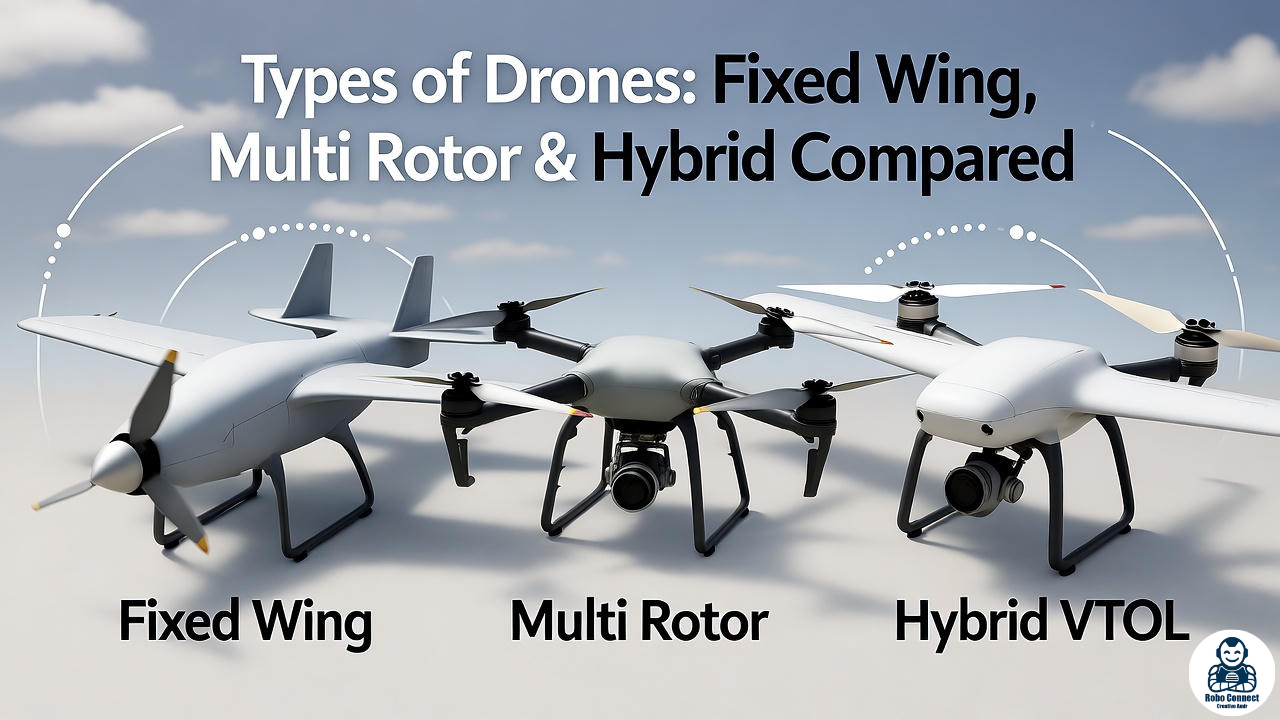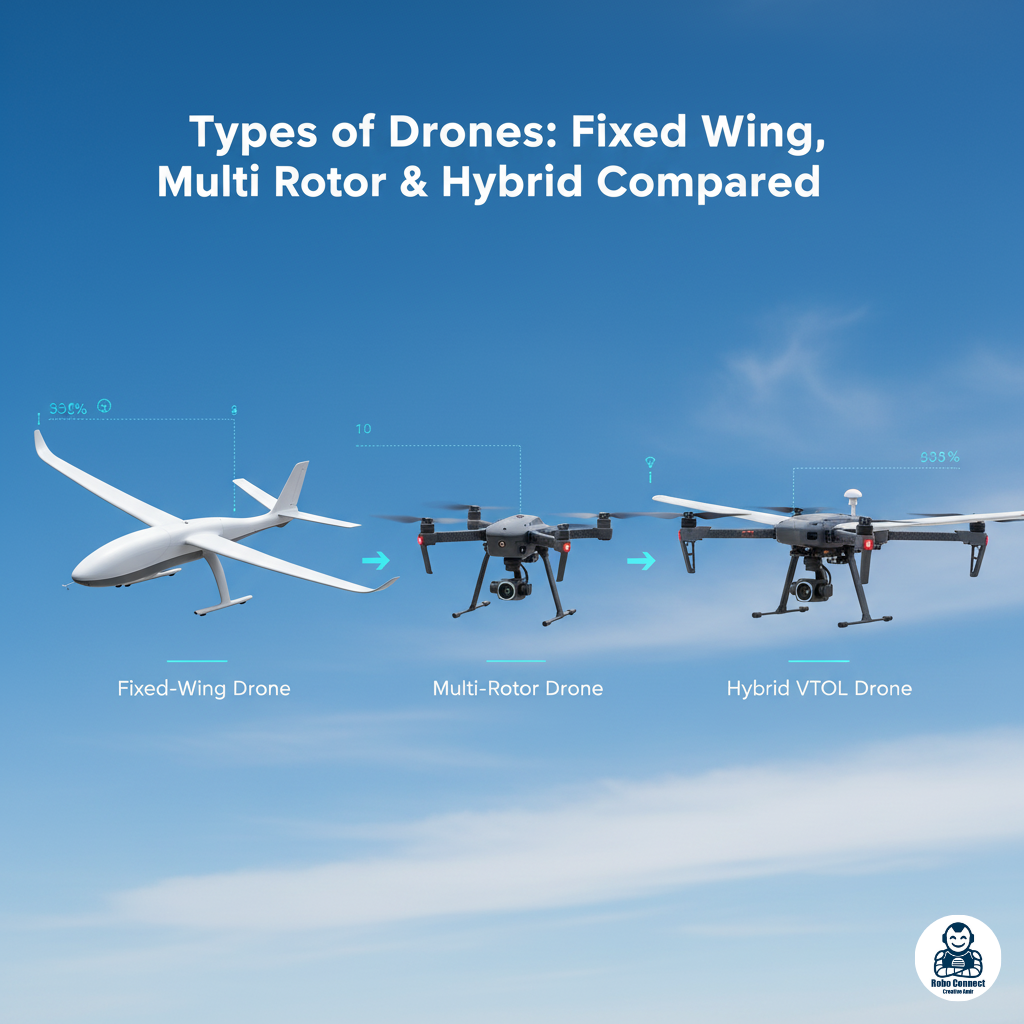Introduction
Not all drones are the same. Some look like small flying planes, others like buzzing quadcopters, and some combine features of both.
If you’re new to drone technology, understanding the different types of drones is crucial before buying, building, or flying one.
In this guide, we’ll cover:
- The main categories of drones.
- How each type works.
- Their pros, cons, and real‑world use cases.
- Which type is best for beginners.
- Fixed‑Wing Drones (Airplane‑Style)
How They Work
- Look like small airplanes with stiff wings.
- Generate lift by moving forward (like commercial planes).
- Propellers provide thrust, wings keep them airborne.
Advantages
- Long flight times (some 1–5+ hours).
- Excellent for covering large distances.
- Carry more payload (sensors, cameras).
- More stable in gusty air.
Disadvantages
- Cannot hover in place.
- Larger take‑off/landing area required.
- Less maneuverable for photography.
Best Applications
- Agricultural mapping .
- Military surveillance.
- Long endurance missions (pipelines, wildlife monitoring).
- Multi‑Rotor Drones (Quadcopters, Hexacopters, Octocopters)
How They Work
- Most common consumer drone design.
- Lift generated by multiple rotors (propellers).
- Examples: Quadcopter (4 rotors), Hexacopter (6), Octocopter (8).
Advantages
- Easy to fly → best for beginners.
- Can hover in place, move in any direction.
- More compact and portable.
- Ideal for aerial photography.
Disadvantages
- Shorter flight time (10–30 mins average).
- Limited payload capacity.
- Less efficient for long‑range tasks.
Best Applications
- Aerial photography/videography .
- FPV racing drones .
- Consumer hobby drones.
- Security/surveillance at small scale.
- Hybrid Drones (VTOL – Vertical Takeoff & Landing)
How They Work
- Combine features of fixed‑wing and multi‑rotor.
- Take off like helicopters (vertically) → Transition into plane‑like flight for efficiency.
- Known as VTOL drones.
Advantages
- No runway needed (take off/land anywhere).
- Longer range + endurance than multirotors.
- More maneuverable than fixed‑wing.
Disadvantages
- More complex design/software.
- Expensive compared to hobby drones.
- Requires advanced flight controller systems.
Best Applications
- High‑end delivery drones .
- Military reconnaissance.
- Long‑range survey/mapping.
- Advanced commercial/industrial uses.
Quick Comparison Table
| Feature | Fixed‑Wing | Multi‑Rotor | Hybrid (VTOL) |
| Flight Duration | 1–5 hrs | 10–30 mins | 1–2 hrs |
| Hover Capability | No | Yes | Yes |
| Maneuverability | Moderate | High | High |
| Payload Capacity | High | Low‑Medium | Medium‑High |
| Cost | $$‑$$$ | $‑$$ | $$$‑$$$$ |
| Best For | Mapping, long missions | Hobby, photography, racing | Delivery, hybrid missions |
Which Drone Type is Best for Beginners?
Multi‑Rotor (Quadcopter).
- Easy to control.
- Affordable.
- Can hover in place.
- Ideal for learning before moving to fixed‑wing or hybrid.
FAQs
Q1: Can I build my own fixed‑wing drone?
Yes. DIY kits are available, but learning with quadcopters first is easier.
Q2: Why do professional delivery drones use hybrids?
Because they combine hovering (ease of delivery) + endurance (covering distance).
Q3: Which is cheapest?
Multi‑rotors are easily available from toy to pro level, while hybrids are high‑end industrial.
Conclusion
- Fixed‑Wing: Long missions, surveys, endurance.
- Multi‑Rotor: Beginner‑friendly, versatile, photography.
- Hybrid (VTOL): Future of commercial drones → Flexible but costly.
If you’re just starting → Get a quadcopter. Once you’ve mastered control, you can explore fixed‑wing endurance or futuristic hybrid drones.

